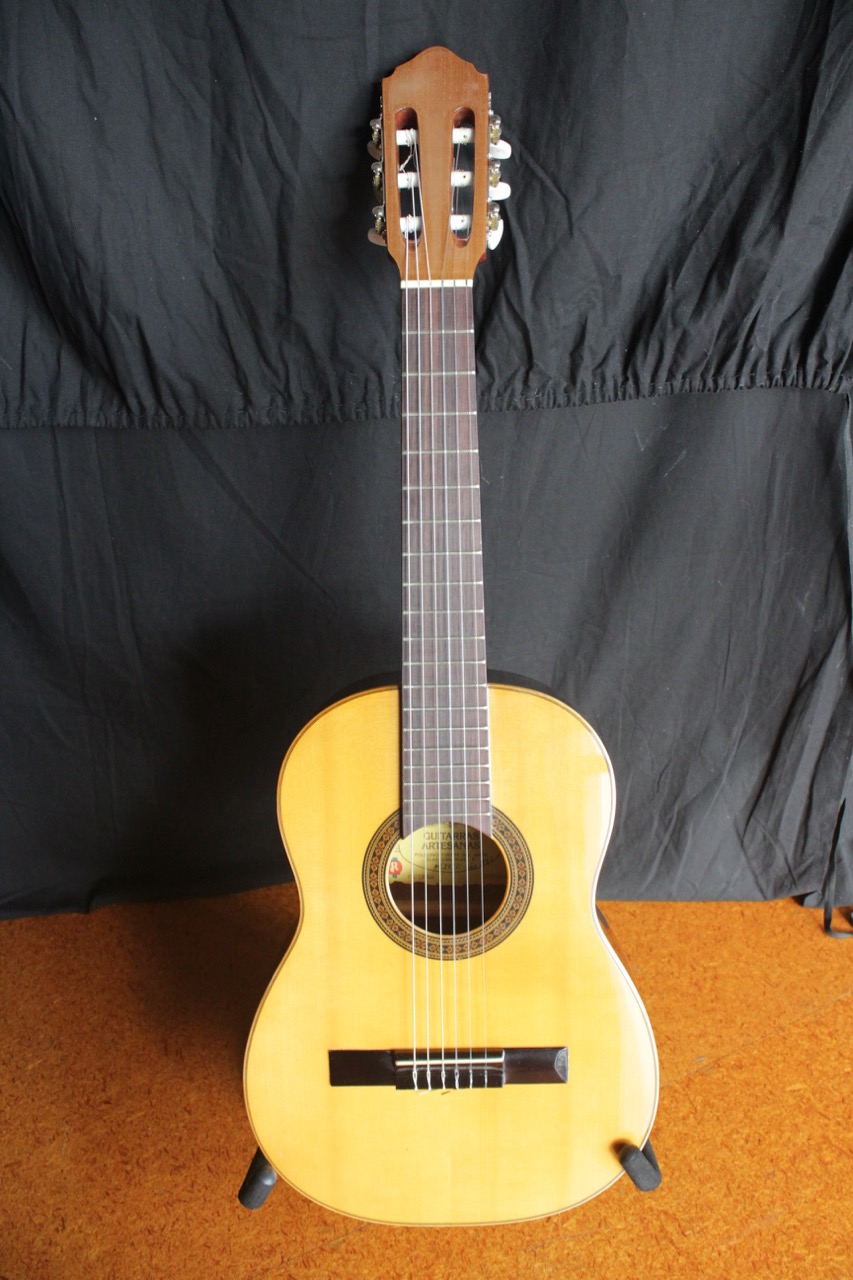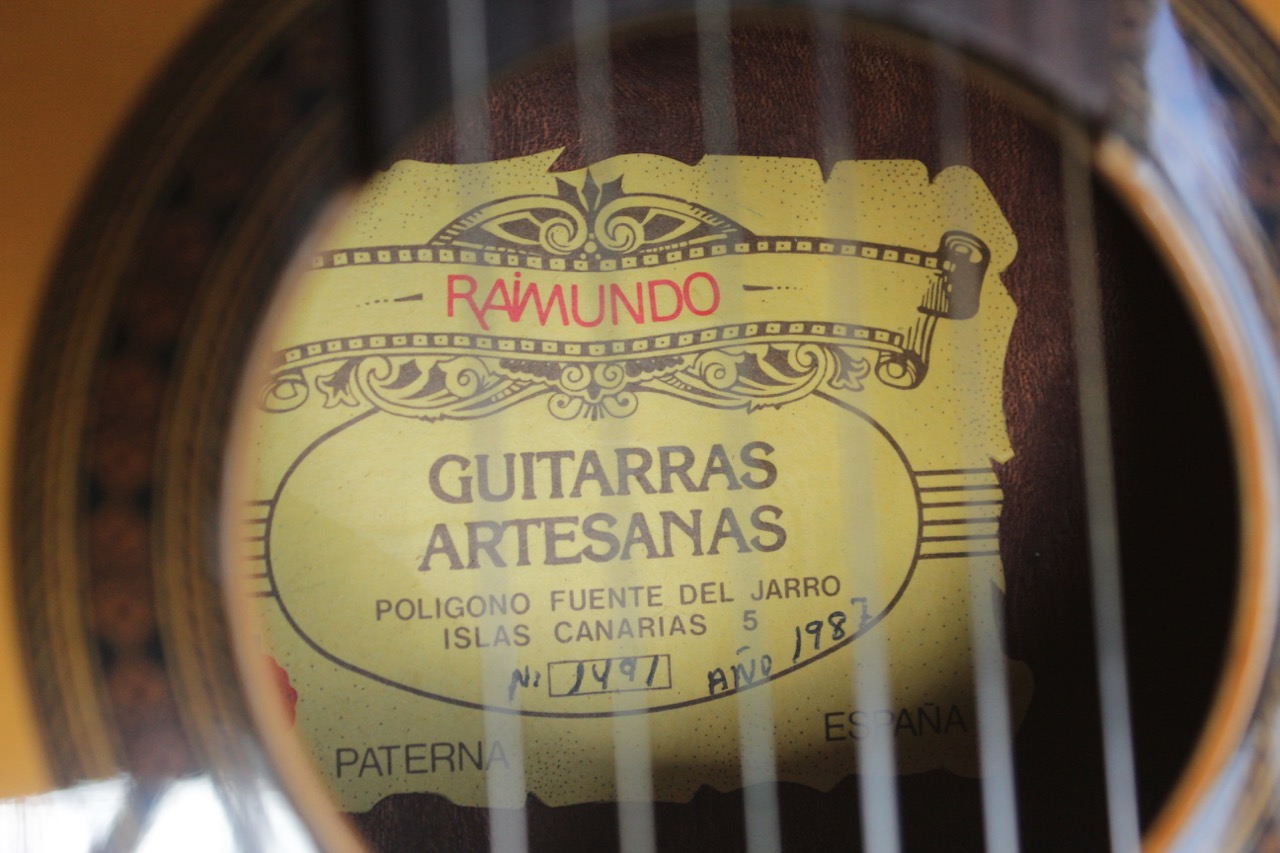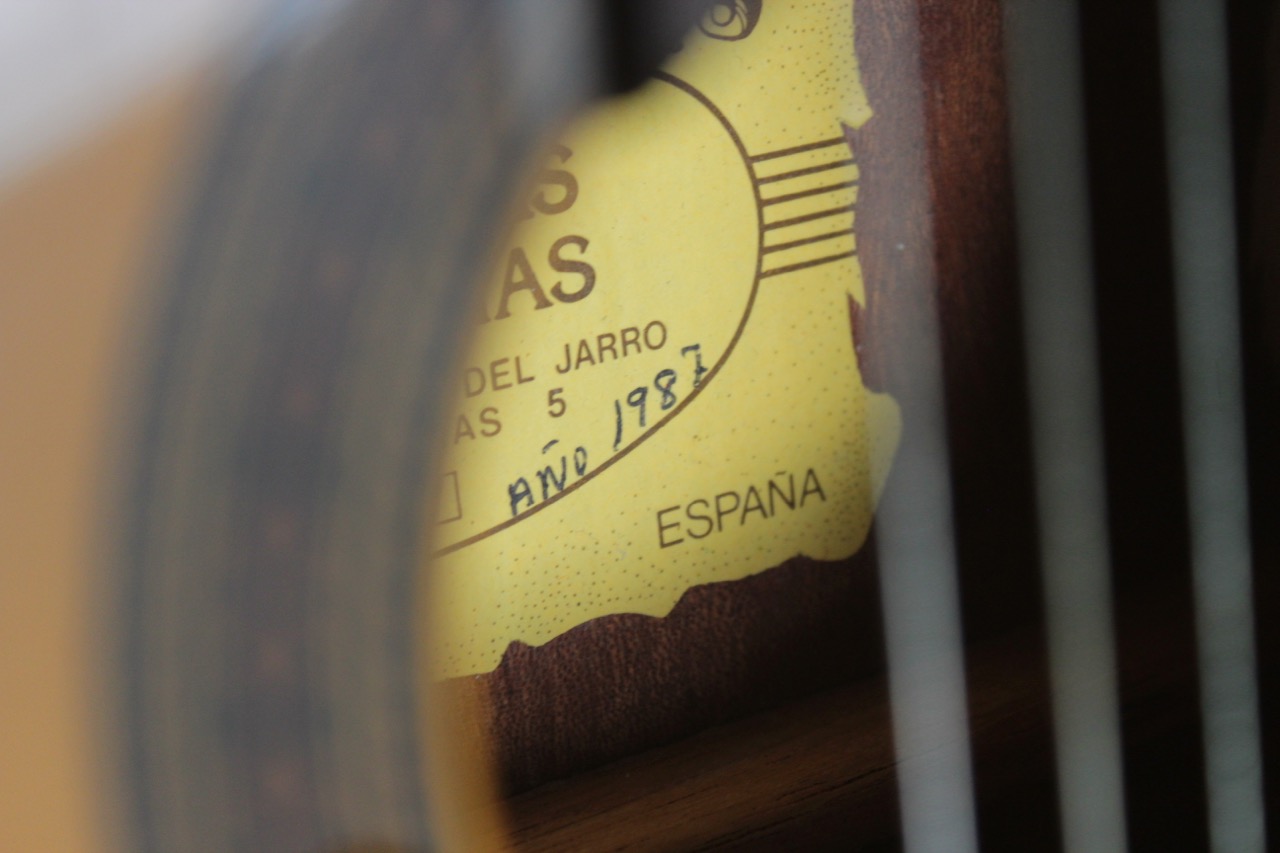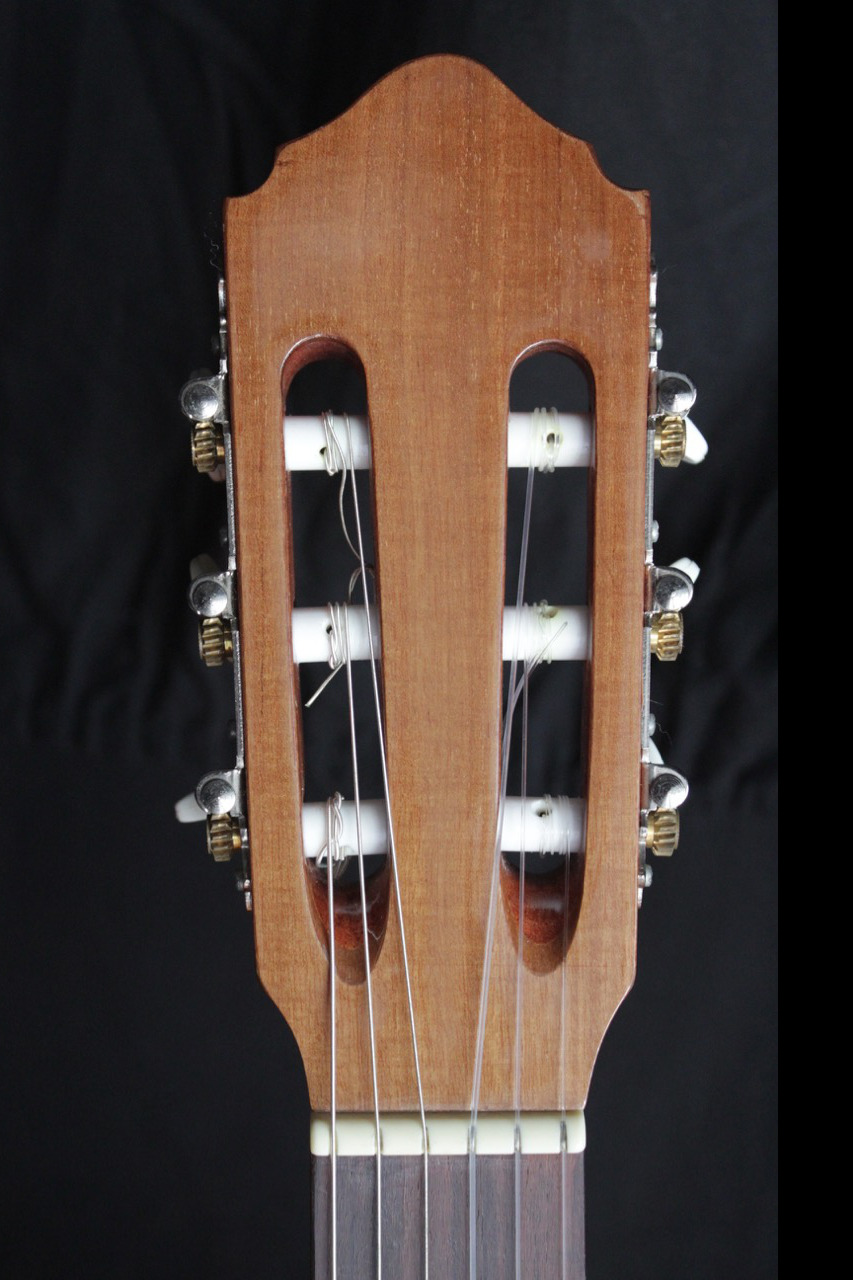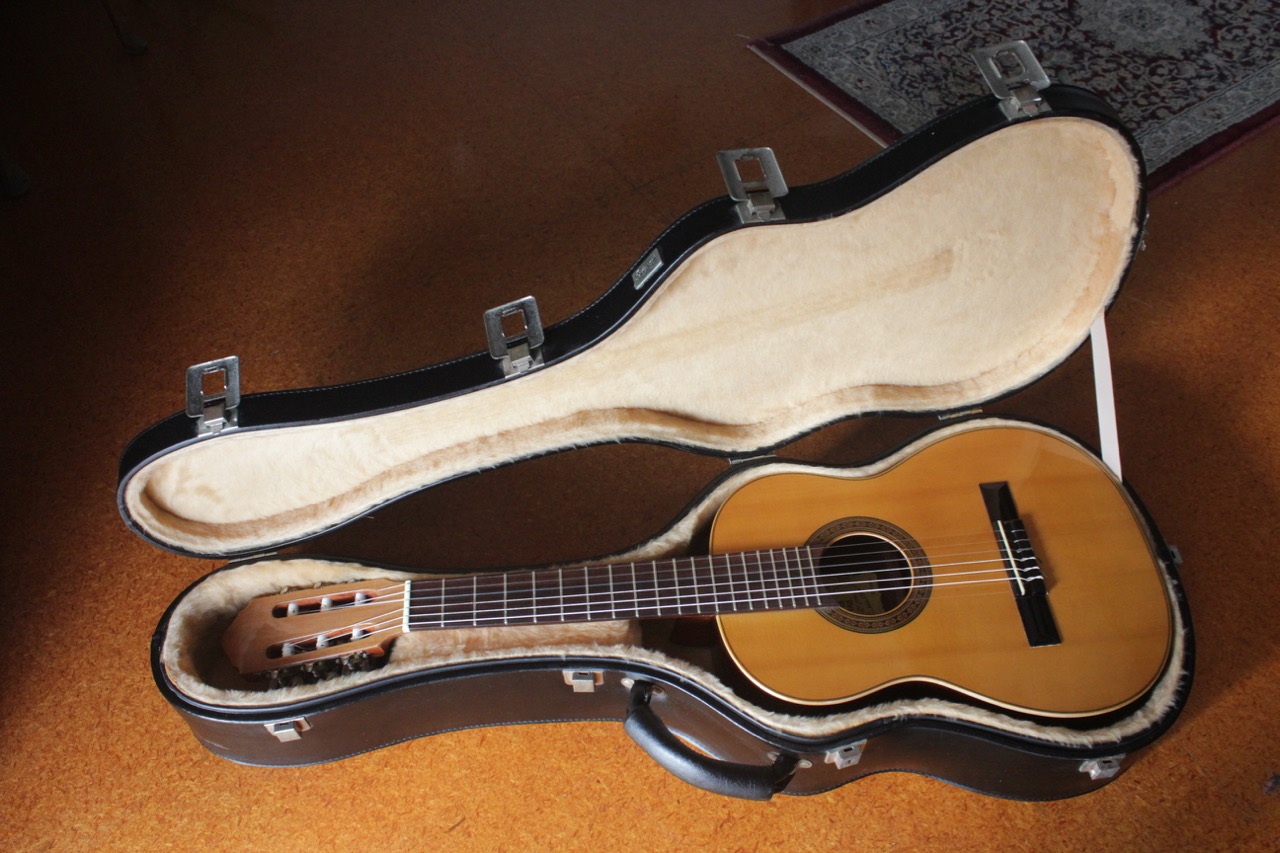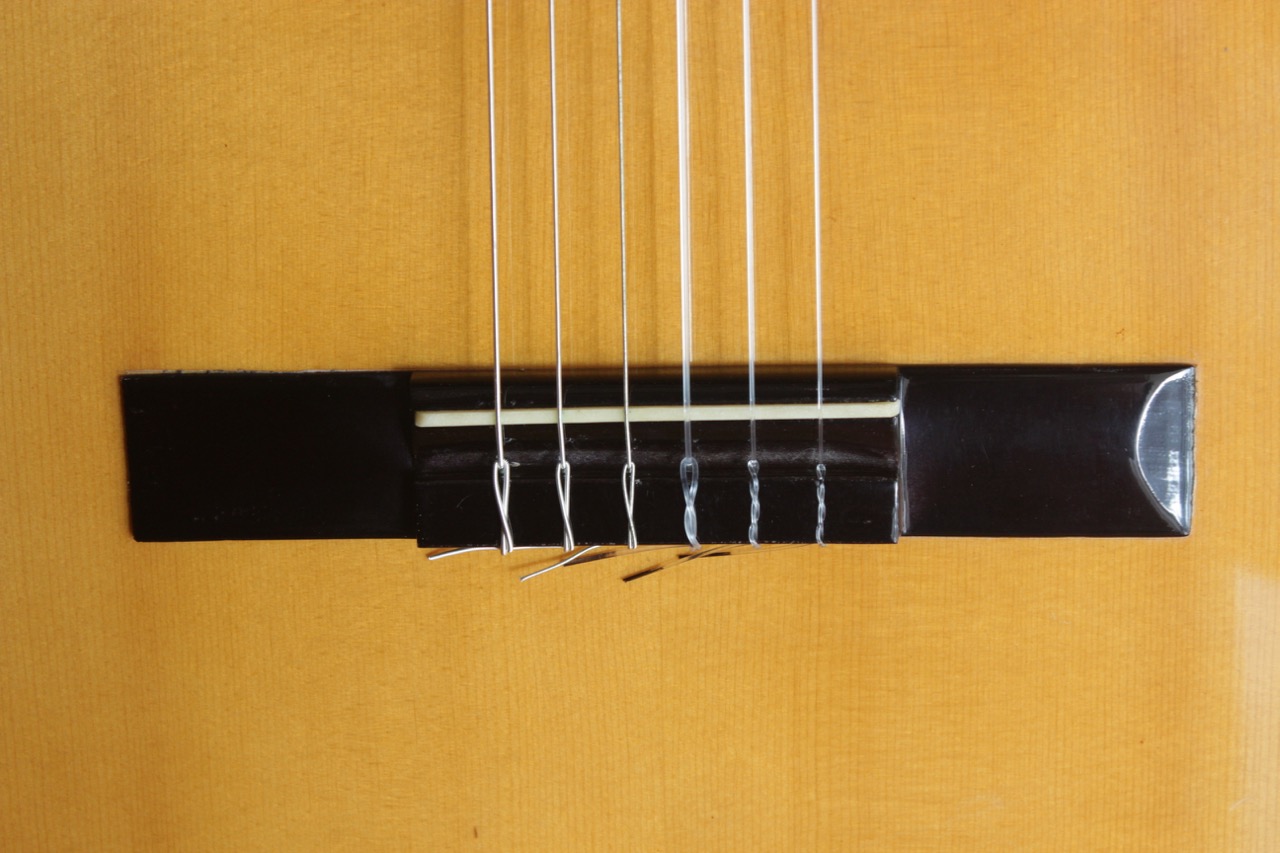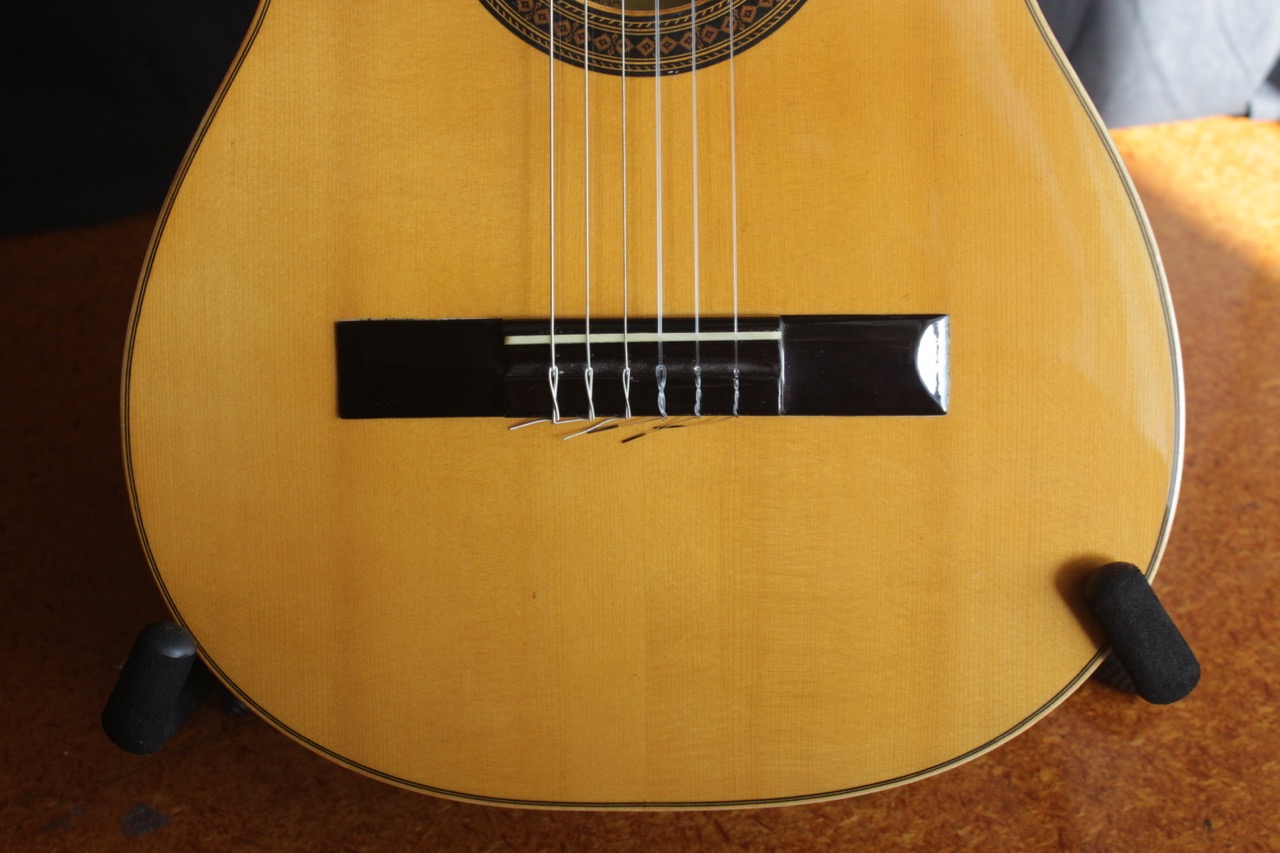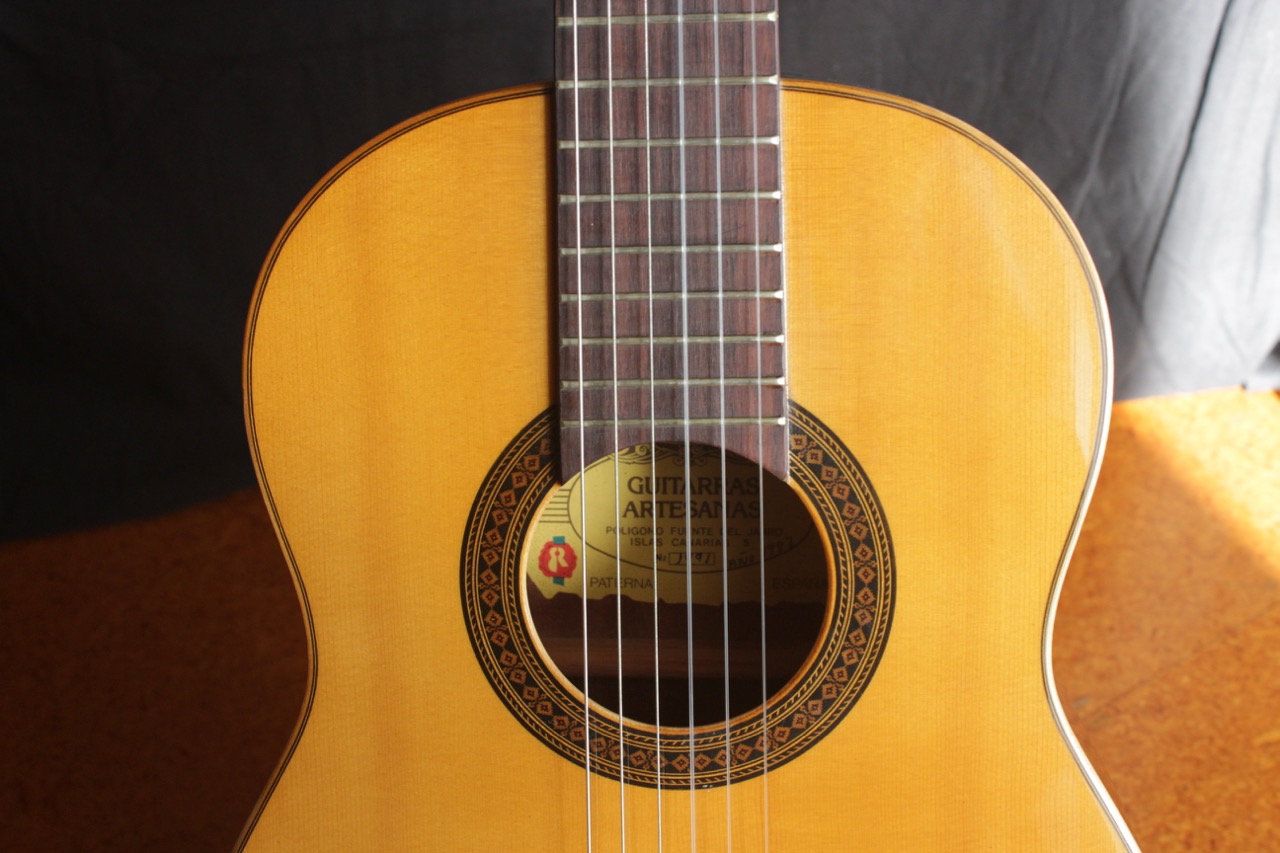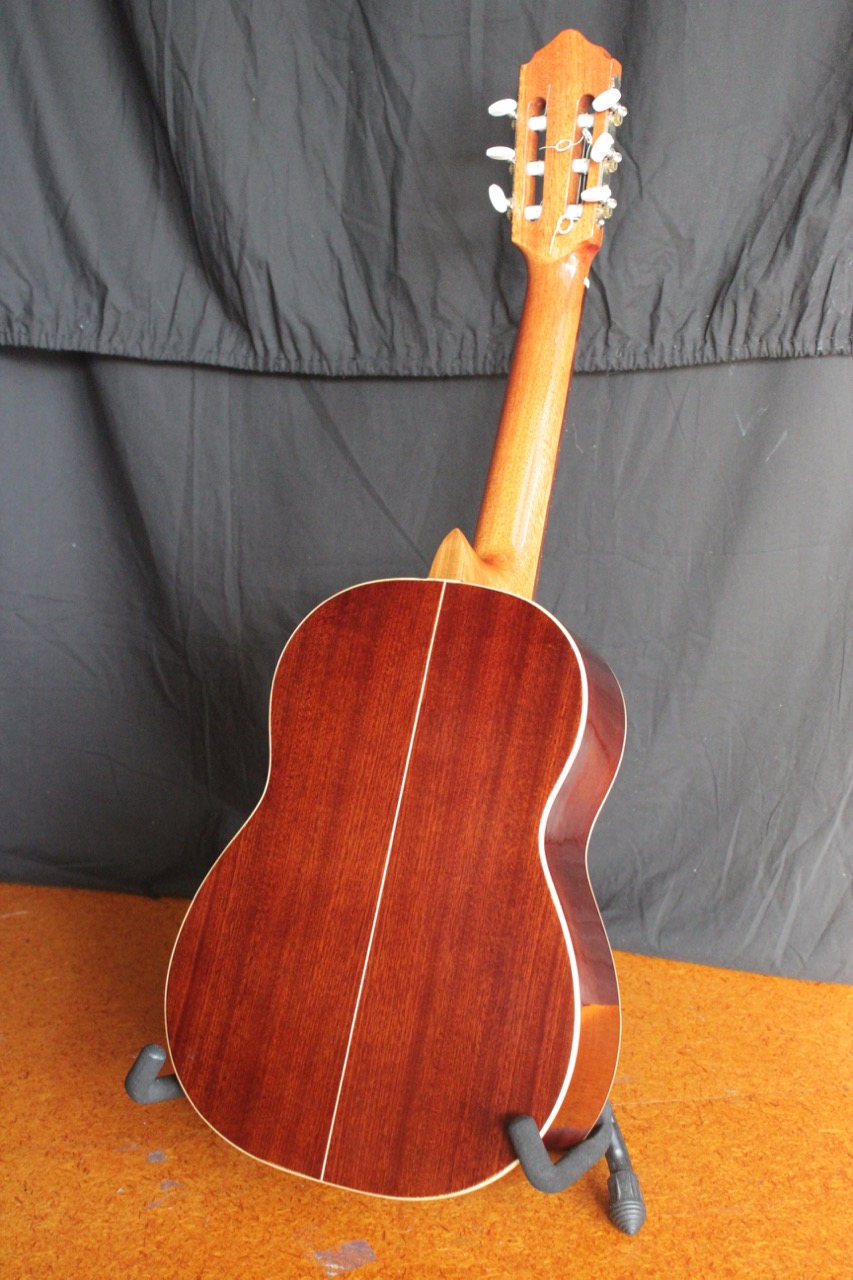|
|
Soundboard: Spruce |
This beautiful requinto was bought new via a classical guitar summer school in New Zealand in the late 1980s. It is in remarkable condition for an approximately 36 year old instrument, the result of being treated with care and only receiving occasional use. In the last decade or two it has mostly remained in storage.
My reason for having the requinto was to play early renaissance lute music and 19th century ensembles music involving the terz guitar. The original purpose of a requinto was for use in guitar orchestras with different sized instruments. According to Wikipedia it is also "used in Mexican and Ecuadorian culture, and their national songs like pasillos and boleros, where the requinto plays a very big role in improvisation."
According to information sourced from other owners, the Raimundo Model 1491 was completely handmade in Spain from 1980 until 1995 with a solid Spruce top and solid Mahagany back and sides. The neck is straight and the the action is unaltered, exactly as when new. The tuning machines are original and reliable.
Normal tuning for a requinto is ADGCEA in the same intervals as a guitar but up a fourth or like standard guitar with a capo on the fifth fret. Other tunings are possible; for example you could tune it as a guitar EADGBE. However, you may need to change the strings to achieve optimum string tension for the particular tuning.
This requinto has a slightly narrower neck than a standard guitar and would suit a person with smaller hands that struggle with larger fretboards. Though not actually designed for children, it would serve as a superb guitar for a special child in the very early stages of guitar playing development.
Another possibility with this instrument is that it might present an opportunity for guitarists to join a ukulele orchestra with a compatible sound without having to relearn chord shapes. I've not tested the theory but am sure it would work.
This instrument is offered for sale with some reluctance but in order to downscale and help fund future projects.
Ideally I would like NZ$2000 for this instrument and I am open to genuine and reasonable offers.
Interested or needing more information? Then please drop me a message via my Facebook artist page.
